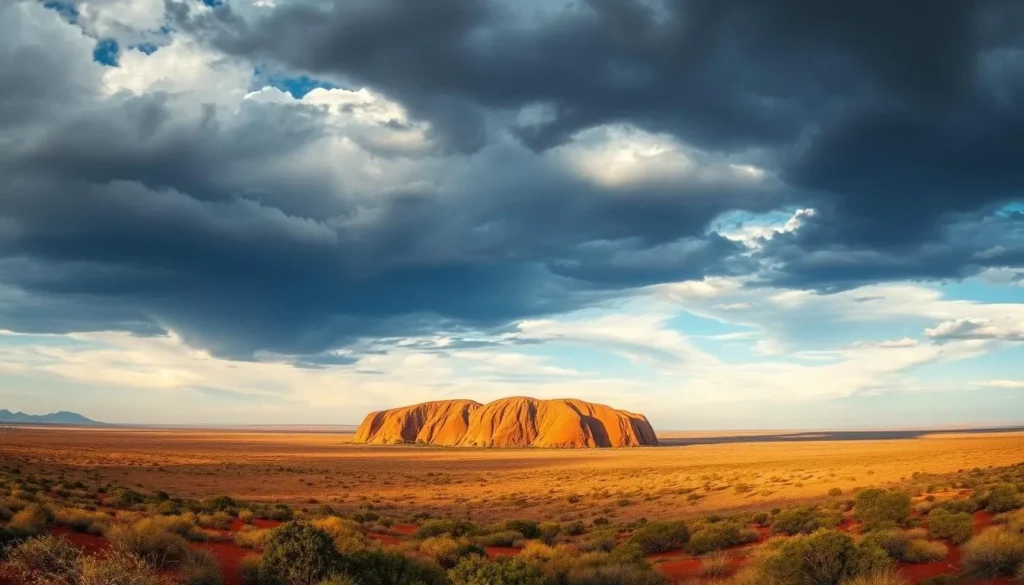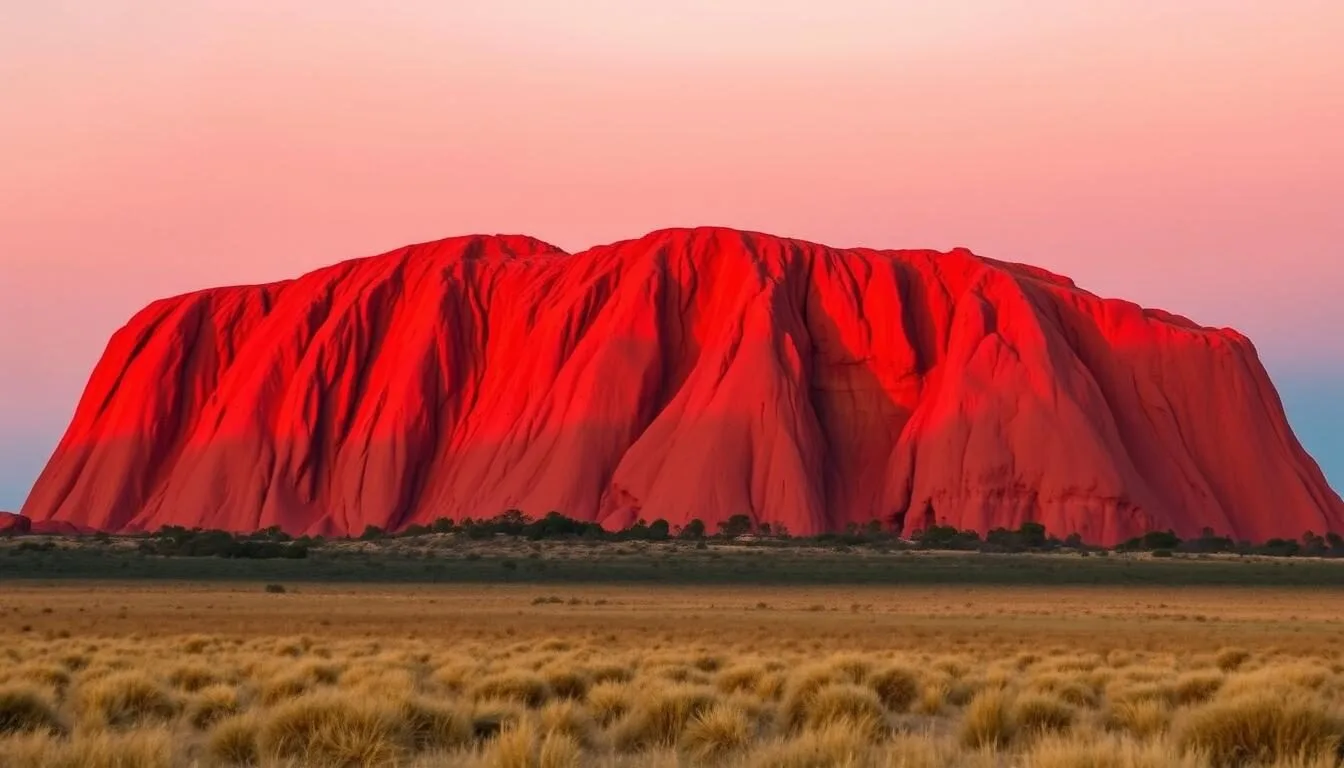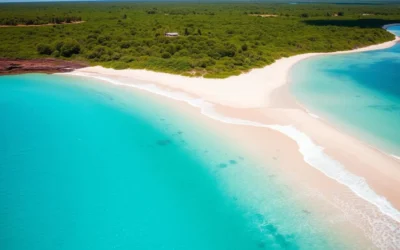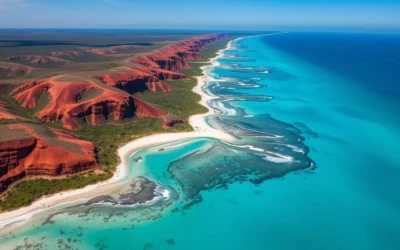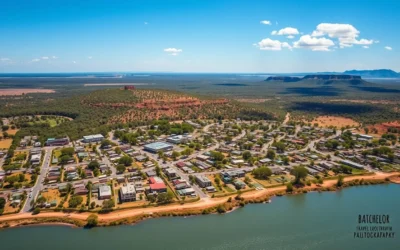Did you know Uluru is taller than the Eiffel Tower? This 348-metre sandstone monolith isn’t just a rock—it’s a living cultural landscape sacred to the Anangu people for over 30,000 years. Rising dramatically from the flat desert plains, Uluru (Ayers Rock) creates one of the most iconic silhouettes in Australia and offers visitors a profound connection to both ancient culture and stunning natural beauty.
Essential Planning Guide for Uluru
Before embarking on your Uluru adventure, understanding a few key details will help ensure a smooth and respectful visit to this sacred site. From transportation options to cultural considerations, here’s what you need to know.
Getting to Uluru
Located in the heart of Australia’s Red Centre, Uluru is accessible by both air and road:
By Air
The most convenient option is flying directly to Ayers Rock Airport (AYQ), located just 20 minutes from Uluru-Kata Tjuta National Park. Direct flights operate from Sydney, Melbourne, Brisbane, and Alice Springs. A free shuttle service connects the airport to all Ayers Rock Resort accommodations.
By Road
If you prefer a road trip, Uluru is approximately a 5-hour drive (450km) from Alice Springs on sealed roads. The journey takes you through the spectacular desert landscape of the Red Centre. Having your own vehicle also provides flexibility for exploring the national park at your own pace.
Best Time to Visit
The ideal time to visit Uluru depends on your tolerance for heat and preference for certain experiences:
| Season | Months | Temperature | Considerations |
| Winter (Peak Season) | June to August | 20°C (68°F) day, 0°C (32°F) night | Perfect hiking weather, clear skies for stargazing, minimal flies, but cold nights and more crowded |
| Spring | September to November | 28-35°C (82-95°F) day | Warming temperatures, wildflowers blooming, increasing fly presence |
| Summer | December to February | 35-45°C (95-113°F) day | Very hot, potential for rare rainfall creating waterfalls on Uluru, abundant flies |
| Autumn | March to May | 25-35°C (77-95°F) day | Cooling temperatures, fewer crowds, moderate fly presence |
Park Passes and Cultural Respect
Entry to Uluru-Kata Tjuta National Park requires a park pass, which costs $38 AUD per adult and is valid for three days. Children under 18 enter free. Passes can be purchased online in advance or at the park entrance.
Important Cultural Information: Uluru is a sacred site for the Anangu people. Climbing Uluru is now prohibited. Some areas around the rock have photography restrictions due to their spiritual significance. Always follow signage and ranger instructions to show respect for this culturally important place.
Best Things to Do at Uluru
From witnessing the changing colors of the rock at sunrise to exploring ancient cultural sites, Uluru offers a range of unforgettable experiences. Here are the top activities to include in your Uluru itinerary.
1. Uluru Base Walk
One of the most rewarding ways to experience Uluru is to walk the full 10.6km loop around its base. This flat, well-maintained trail takes you through diverse landscapes, past ancient rock art, and alongside sacred waterholes. The complete circuit takes approximately 3.5 hours at a leisurely pace.
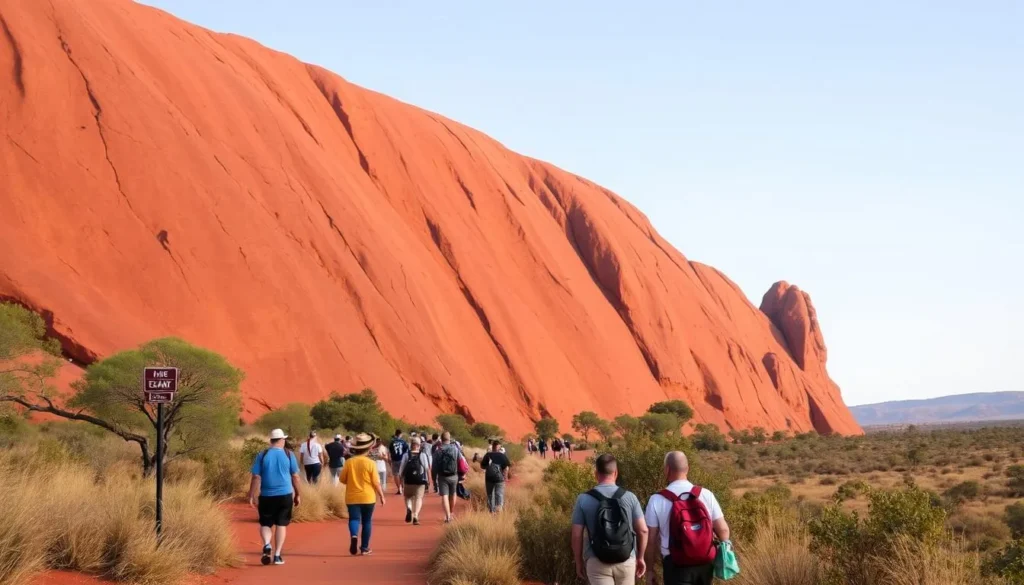
Pro Tip: Start the Base Walk early in the morning (before 8am) to avoid the midday heat and experience the changing colors of the rock as the sun rises. The Mala car park is the recommended starting point.
2. Witness Sunrise or Sunset at Uluru
The changing colors of Uluru at sunrise and sunset create a truly magical experience. As the sun’s position shifts, the rock transforms through spectacular shades of purple, brown, orange, and blazing red. There are designated viewing areas for both sunrise and sunset with parking facilities.
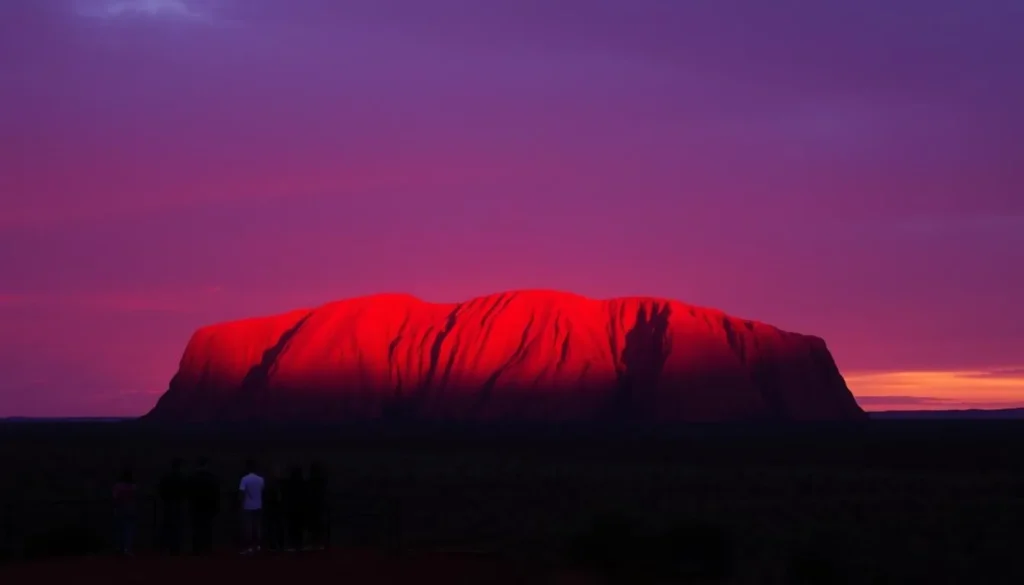
3. Explore Kata Tjuta (The Olgas)
Just 40km west of Uluru lies the equally impressive Kata Tjuta (The Olgas), a collection of 36 dome-shaped rock formations. The name Kata Tjuta means “many heads” in the local Pitjantjatjara language, and the highest dome rises even taller than Uluru at 546 meters.
Valley of the Winds Walk
This 7.4km circuit takes you between the massive domes and offers spectacular views from two lookout points. The moderate to difficult trail requires a reasonable level of fitness but rewards hikers with breathtaking scenery and a sense of being surrounded by these ancient formations.
Walpa Gorge Walk
For a shorter, easier option, the 2.6km return Walpa Gorge Walk leads you between two of the tallest domes of Kata Tjuta. The trail follows a natural creek bed and is suitable for most fitness levels. The towering walls create a wind tunnel effect (Walpa means “wind” in the local language).
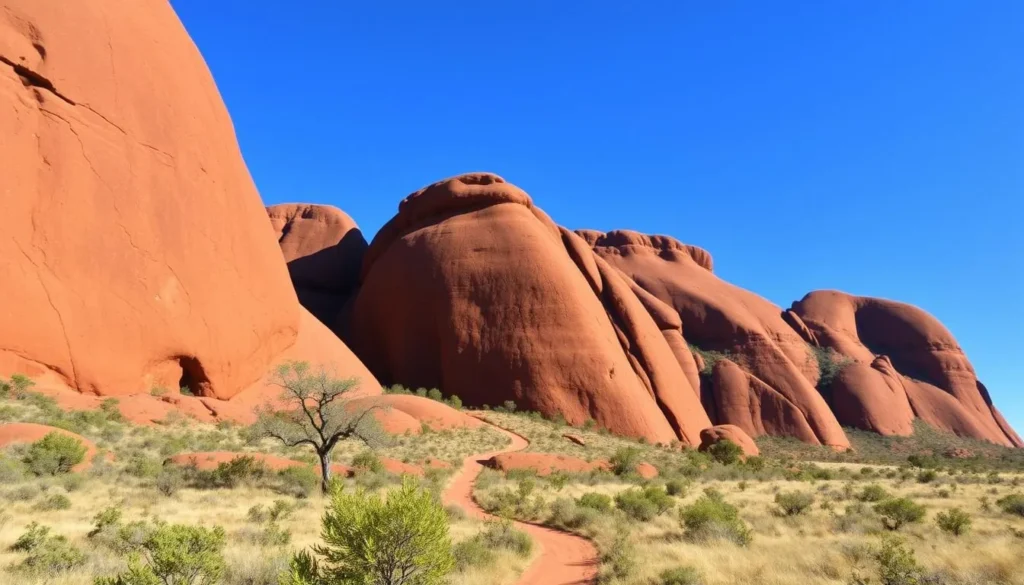
4. Cultural Experiences with Anangu People
Engaging with the rich cultural heritage of the Anangu people provides deeper insight into the spiritual significance of Uluru-Kata Tjuta National Park. Several experiences offer authentic cultural connections:
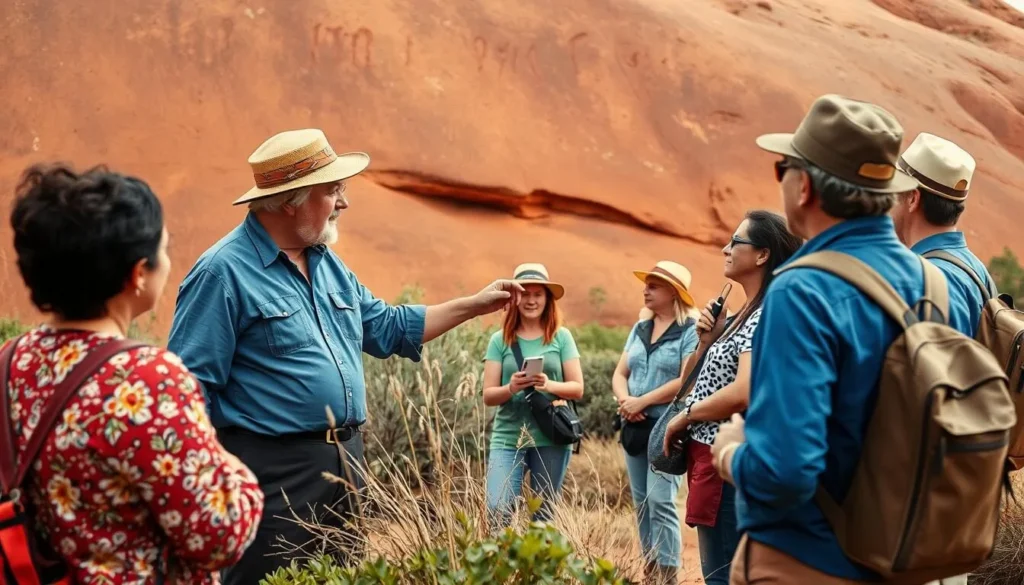
5. Field of Light Art Installation
Artist Bruce Munro’s internationally acclaimed Field of Light installation has been extended indefinitely due to its popularity. This magical outdoor exhibition features more than 50,000 slender stems crowned with frosted glass spheres that bloom as darkness falls over Australia’s spiritual heartland.
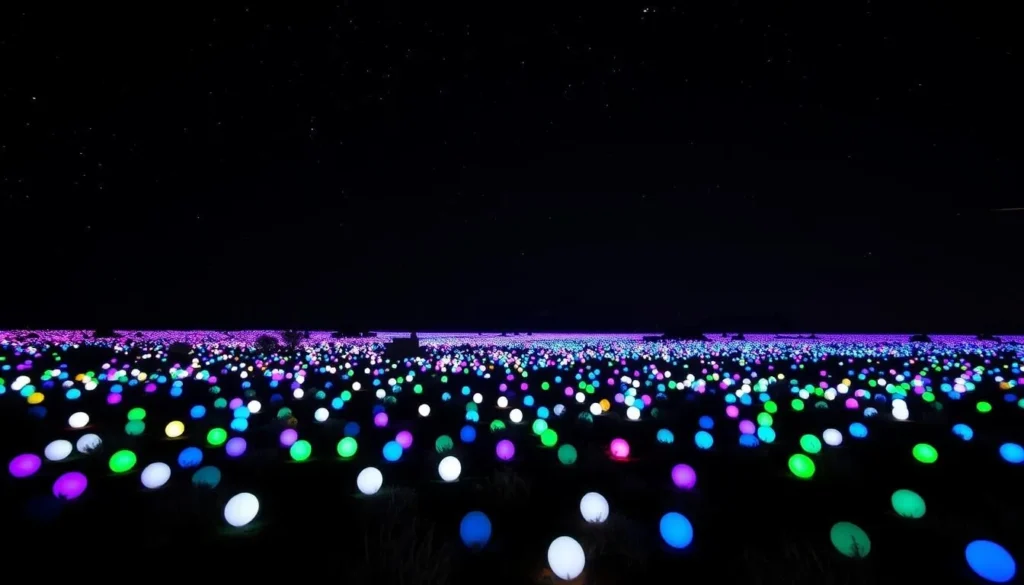
The experience is particularly magical at dawn or dusk when the changing light creates a stunning contrast with the illuminated spheres. Various viewing options are available, from a simple viewing pass to deluxe experiences that include canapés and sparkling wine.
6. Stargazing in the Outback
The clear, unpolluted skies above Uluru offer some of the best stargazing opportunities in the world. The lack of light pollution and dry desert air create perfect conditions for viewing the Milky Way, Southern Cross, and other celestial wonders of the southern hemisphere.
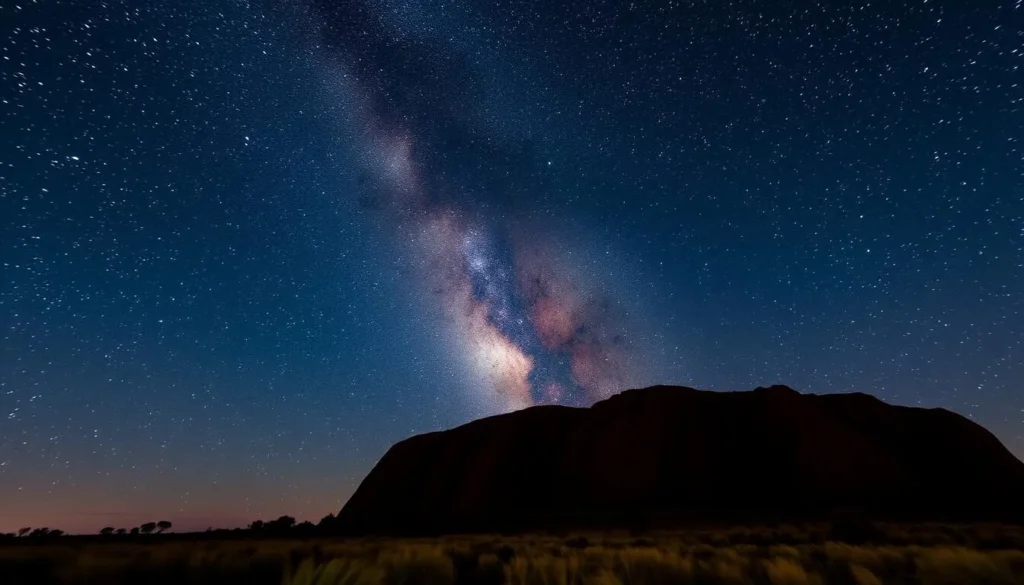
Guided astronomy tours are available, where experts use powerful telescopes to show you planets, stars, and distant galaxies while sharing both scientific knowledge and Aboriginal stories about the night sky.
7. Sounds of Silence Dinner
For a truly memorable dining experience, the award-winning Sounds of Silence dinner combines gourmet bush tucker-inspired cuisine with the breathtaking backdrop of Uluru and Kata Tjuta. The evening begins with canapés and sparkling wine as you watch the sunset over Uluru, followed by a three-course meal under the stars.
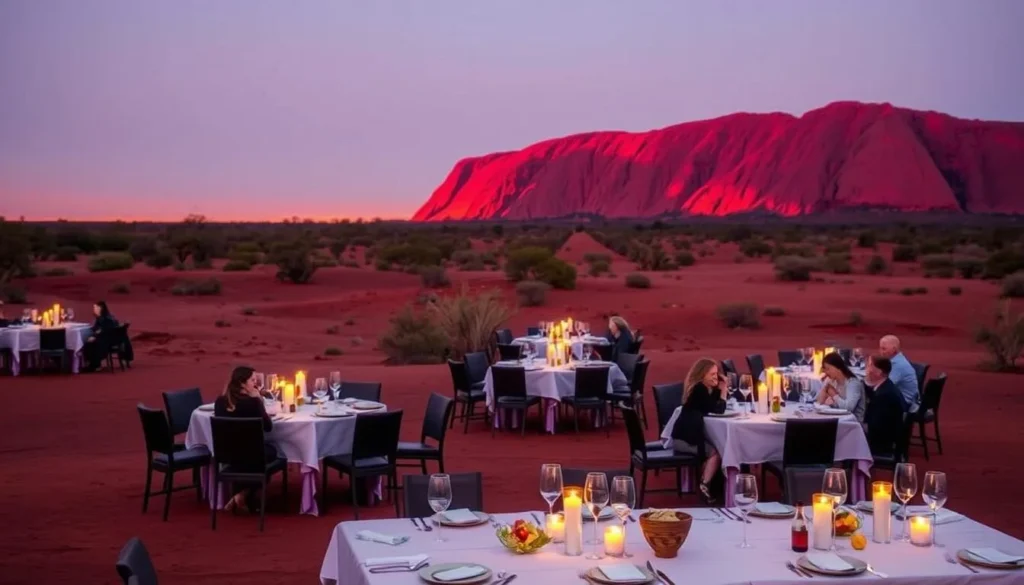
After dinner, an astronomer will guide you through the southern night sky, pointing out stars, planets, and constellations. This combination of fine dining, cultural insights, and stargazing creates an unforgettable Outback experience.
Practical Information for Your Uluru Visit
Where to Stay
All accommodation options are located at Ayers Rock Resort in the township of Yulara, just outside the national park. The resort offers a range of options to suit different budgets:
Luxury
Sails in the Desert offers 5-star luxury with a beautiful pool, spa, and premium dining options. For the ultimate experience, Longitude 131° provides exclusive luxury tented pavilions with uninterrupted views of Uluru.
Mid-Range
Desert Gardens Hotel and The Lost Camel Hotel offer comfortable rooms with modern amenities. Emu Walk Apartments provide self-catering options ideal for families or longer stays.
Budget
The Outback Pioneer Hotel & Lodge offers budget rooms and dormitory options. For campers, Ayers Rock Campground provides powered and unpowered sites plus cabin accommodation.
Getting Around
Once at Uluru, you have several options for exploring the area:
Weather and What to Pack
The desert climate at Uluru means dramatic temperature variations between day and night, as well as between seasons:
Essential Items
Clothing
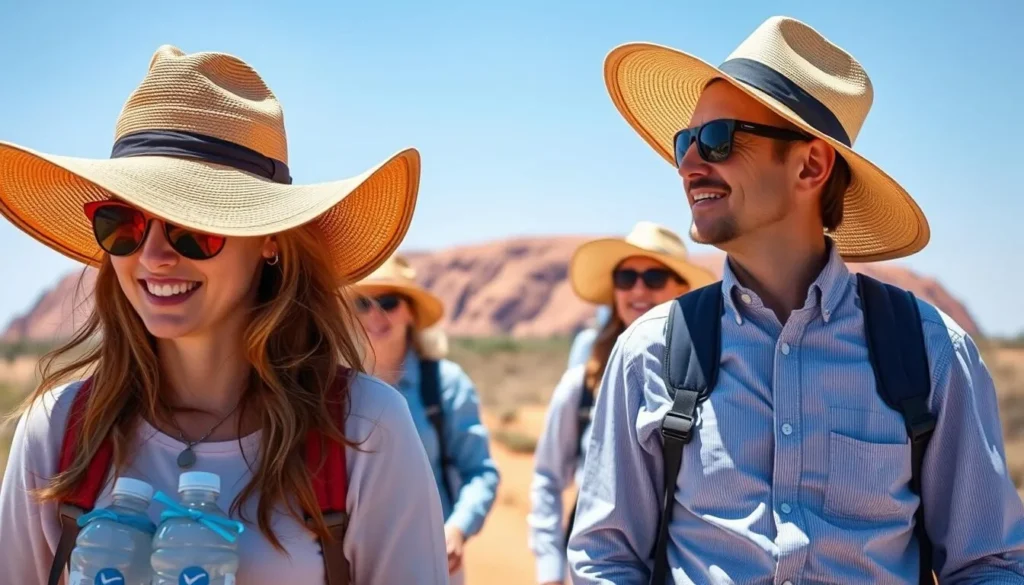
Health and Safety
The remote desert environment presents some specific health and safety considerations:
Important Safety Tips:
- Drink plenty of water (at least 1 liter every hour during hot weather)
- Apply sunscreen regularly, even on cloudy days
- Avoid hiking during the hottest part of the day (10am-3pm) in summer
- Carry a basic first aid kit
- Check trail closure information – walks may close when temperatures exceed 36°C
- Mobile phone coverage is limited outside of Yulara township
Dining Options
All restaurants and cafés are located within Ayers Rock Resort, offering a range of dining experiences:
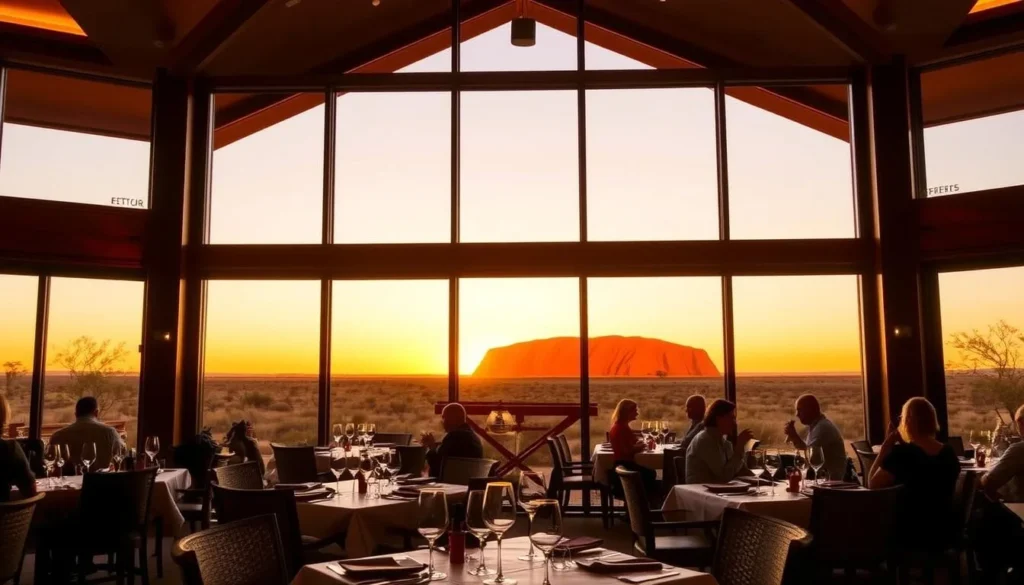
Sample Uluru Itineraries
Whether you have one day or several, here are some suggested itineraries to make the most of your time at Uluru:
One-Day Itinerary
Two-Day Itinerary
Day 1:
Day 2:
Three-Day Itinerary
Day 1:
Day 2:
Day 3:
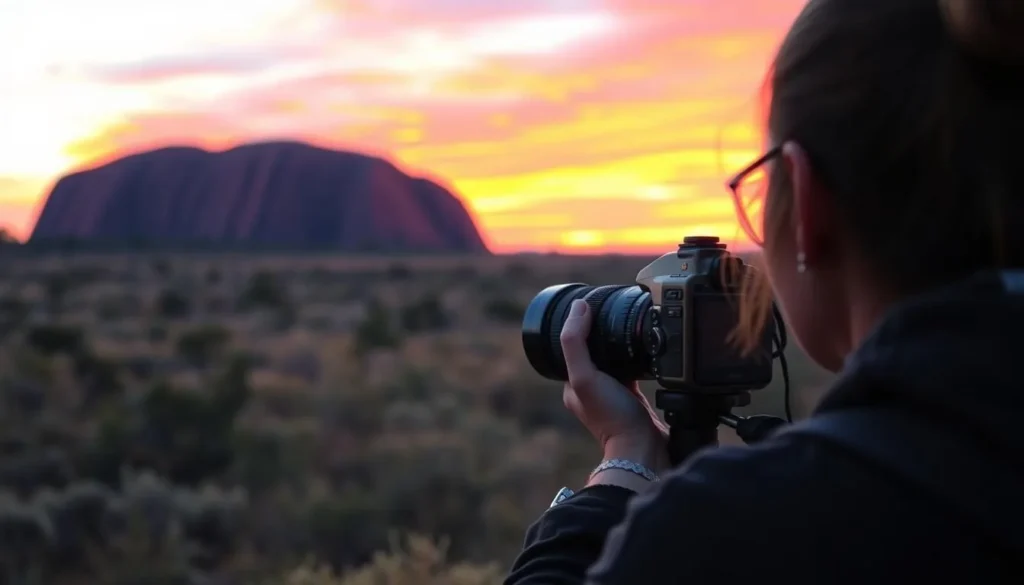
Experience the Magic of Uluru
Uluru isn’t just a destination—it’s a profound connection to Earth’s oldest living culture and one of the world’s most awe-inspiring natural wonders. Whether you’re watching the rock change colors at sunrise, learning about Anangu traditions, or gazing at the Milky Way in the clear desert night, Uluru offers experiences that will stay with you long after you’ve returned home.
The spiritual significance of this ancient landscape, combined with its breathtaking beauty, creates a unique atmosphere that can’t be found anywhere else on Earth. As you plan your journey to Australia’s Red Centre, remember that Uluru isn’t just a place to see—it’s a place to feel, connect, and experience with all your senses.
